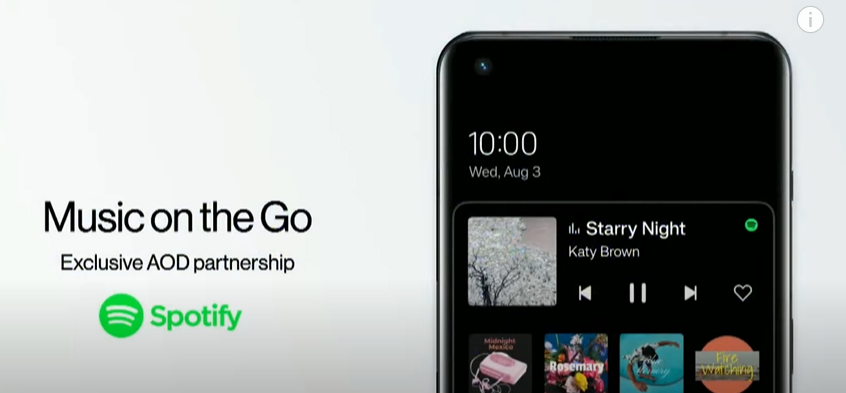OnePlus calls the new design language “Aquamorphic”, and its meant to represent fluidity, inspired by nature. OxygenOS 13 is based on Android 13, which means it will be getting most of the new features from the new Android version, like Fast Pair, audio switching, themed app icons and more. On top of that OnePlus has added its very own set of features like AI System Booster, Spatial audio support, Private Safe 2.0, Smart Launcher, and upgrades to the Hyperboost Gaming Engine. There’s also a new sidebar Toolbox, which again looks a lot like the one on ColorOS 12. OnePlus also claims that OxygenOS 13 feels 30 percent more fluent, with a 20 percent faster app installation speed and a 10 percent faster app start-up speed. Another interesting addition is their Always on Display feature. AOD was available on OnePlus phones for sometime, but OnePlus has now expanded that with new clocks and designs, and also a Spotify themed exclusive AOD. The icon look and feel has also been changed, now being more rounded and very similar to the ColorOS theme.
Is OxygenOS 13 Bad Then?
Absolutely not! Many people like having the extra features that often come with the custom ROMs on top of Android. What’s disappointing is OnePlus reneging on their promise. After the backlash on the Unified OS news, OnePlus specifically stated that OxygenOS 13 will retain its “unique visual design”, and that OxygenOS would remain a lighter experience close to stock Android. So for anyone looking to buy a OnePlus phone, great choice! but don’t go in looking for that light stock Android experience anymore, as OnePlus has clearly moved on from that, even if the fans didn’t.
